The three Rs: How Bolivia combats illiteracy
- Published
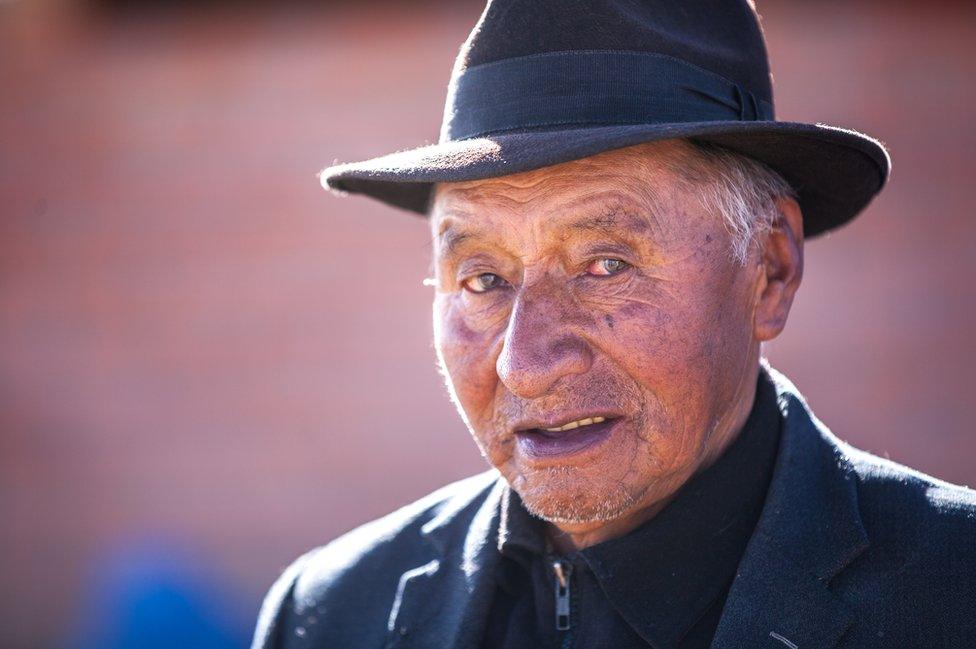
Quintim Pulma was not allowed to learn to read and write when he was a boy
"Reading and writing were forbidden," says Quintim Pulma, 83.
Mr Pulma, a former policeman dressed elegantly in a slightly worn jacket and wearing a black hat, recalls the days when he was growing up in rural Bolivia: "I lived at the farm at which my parents worked and the owner threatened that if I went to school, he'd cut my tongue out."
But now things are different for Mr Pulma.
"These days, I can study and prove to people that I'm capable of doing anything," he says.
Mr Pulma is one of 39 elderly students in a literacy group in El Alto, Bolivia's second largest city.
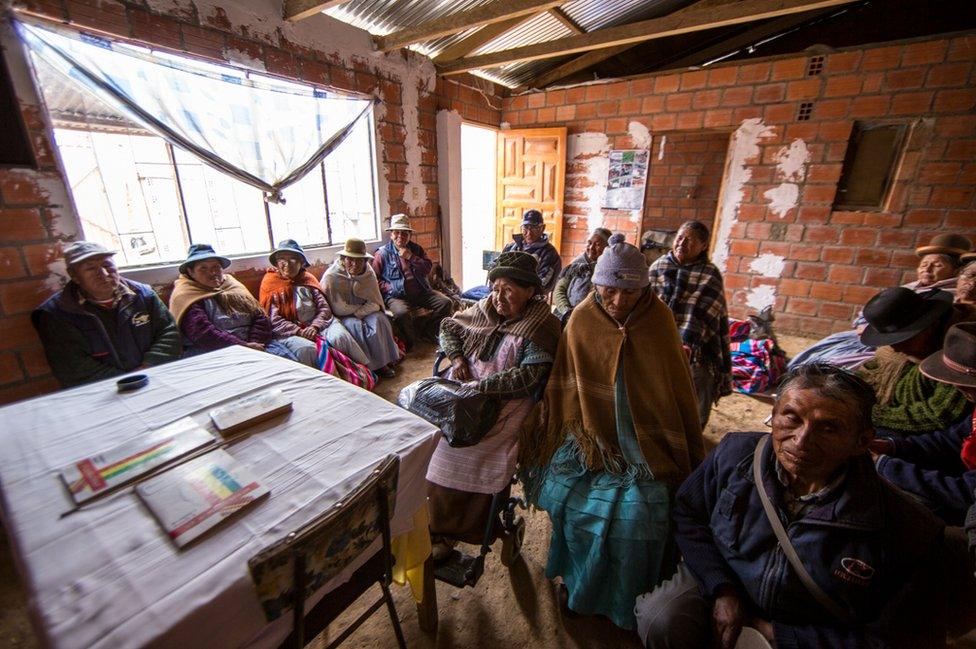
The group in El Alto is made up of mainly elderly students
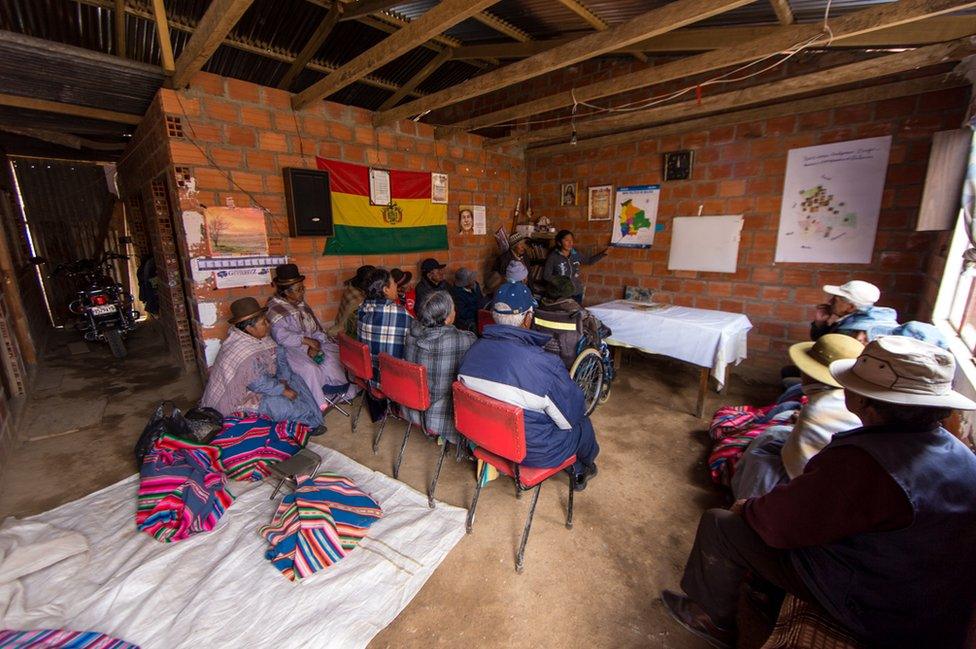
As well as literacy, students are taught basic geography
Their group is part of the "Yes, I can" adult literacy campaign which was launched in Bolivia 10 years ago.
Most of the students are women over the age of 50 from a poor, rural background.
Officials say that it is thanks to the "Yes, I can" programme that illiteracy rates dropped from 13.28% in 2001 to 3.8% in 2014, when the last census was conducted.
This means that Bolivia is now among the countries considered to have eradicated illiteracy by Unesco's standards, which requires countries to maintain a rate of illiteracy of below 4%.
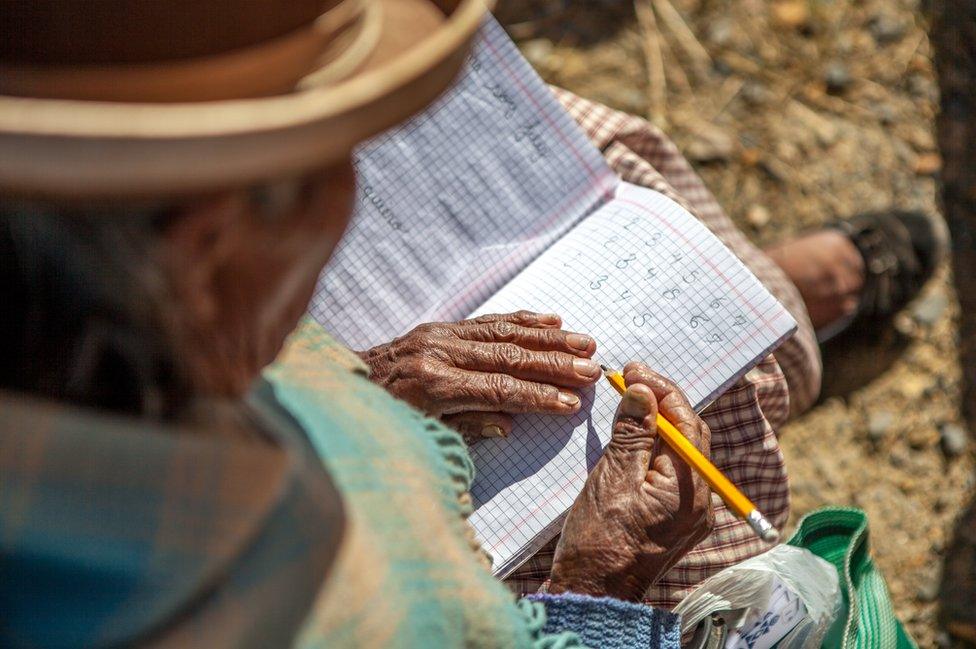
Students are told to practise writing numbers and letters every day
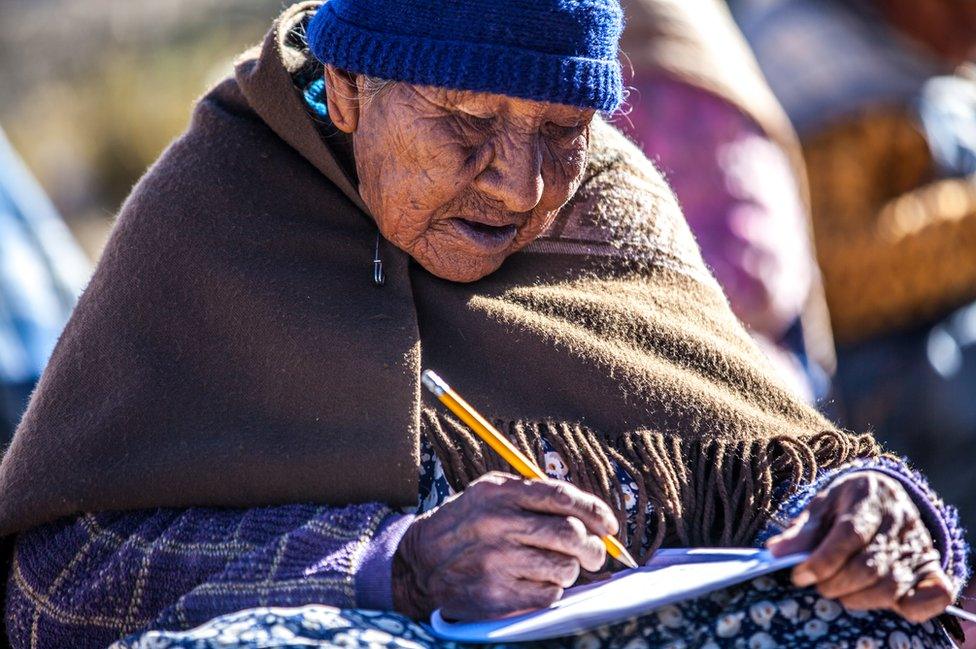
The classes are often held outdoors
Bolivia's left-wing President, Evo Morales, had made eradicating illiteracy one of his main priorities when he came to office in 2006.
In order to achieve it, he turned to ideological allies Cuba and Venezuela for help.

Students progress to the second level after learning basic literacy
Cuba helped with teachers and teaching materials and Venezuela provided financial assistance.
As the Bolivian government found the results to be positive at a relatively low cost of 18m bolivianos per year (£2m; $2.6m), it decided to go ahead with the second phase of the literacy programme, called "Yes, I can carry on".
In this second phase, the students who have spent three to six months learning to read and write spend another two years further deepening their knowledge of maths and literacy and the basics of natural sciences.
"Yes, I can" was originally developed in Cuba by educator Leonela Relys and relies on local facilitators to go into the communities to teach literacy with the help of audio visual aids.
The teacher is at the heart of the programme. Keyla Guzman Velez is one of them.
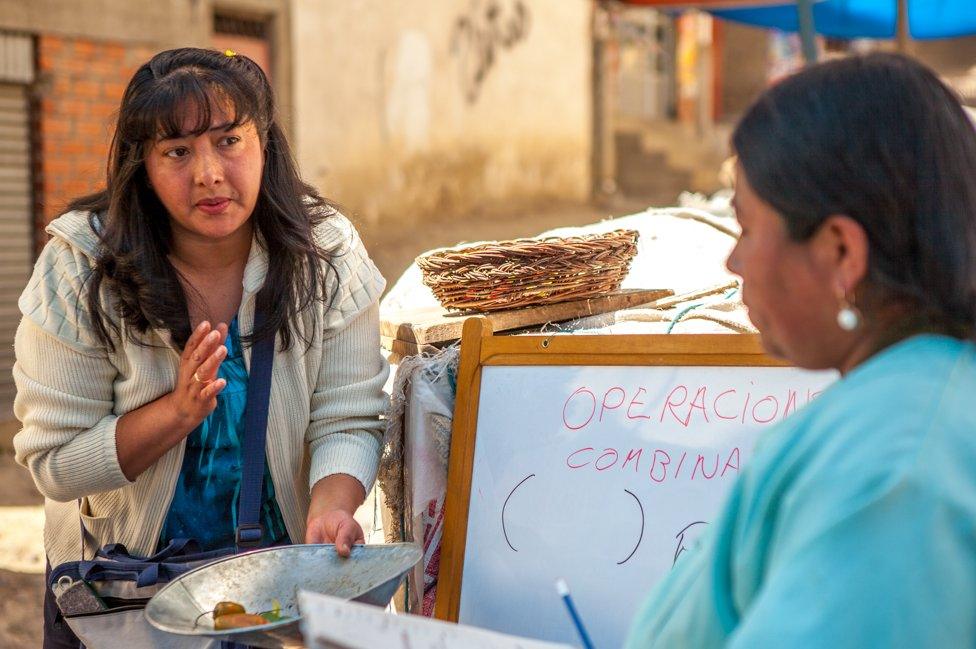
Keyla Guzman Velez has always wanted to be a teacher
She lives with her husband and three-year-old son Josue next to Rodriguez market, the largest food market in La Paz.
Ms Guzman noticed that many of the women who spent long days working at the market could neither read nor write, never mind do simple maths.
She set out to teach them basic literacy but soon found that they were not willing to attend classes after work.
As most of the women started at 05:00 and did not finish before 19:00, there was just not enough time, they said.
Nor were they willing to leave their stalls where they just about made a living for any length of time.
Ms Guzman says she realised she would have to adapt to their needs if she were to succeed.
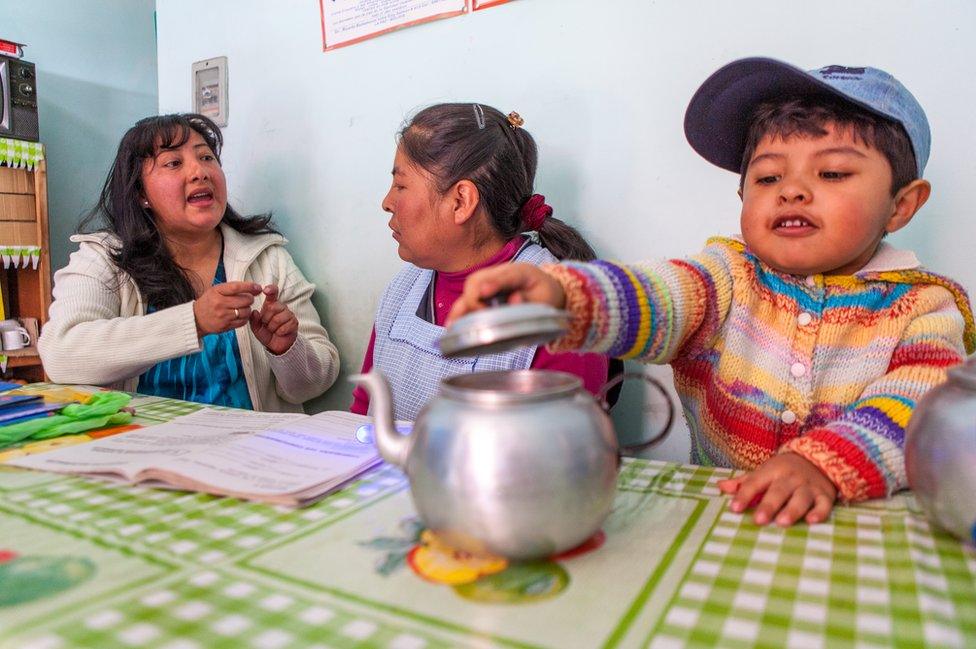
Many of the women Ms Guzman teaches are also looking after young children
"You have to understand these women's routine. They get up at dawn, they often have to leave their children behind at home, then they work all day and when they get home they still have to do the housework."
So Ms Guzman asked each one of the women what would be the best time to stop by their stall and did a daily round of the market with a small whiteboard.
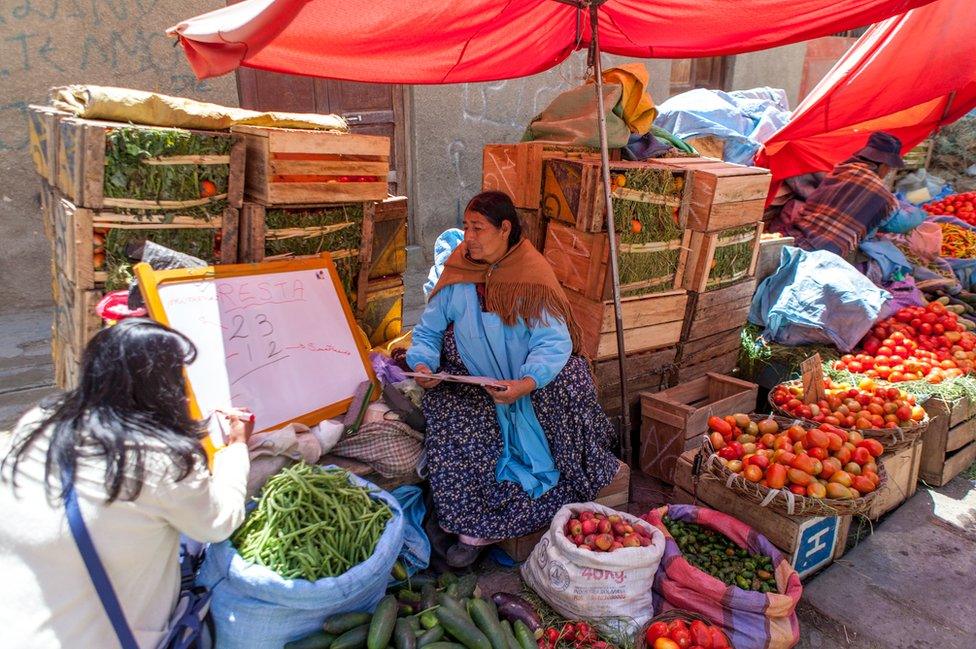
Ms Guzman teaches the women at their market stalls so they do not have to leave them unattended
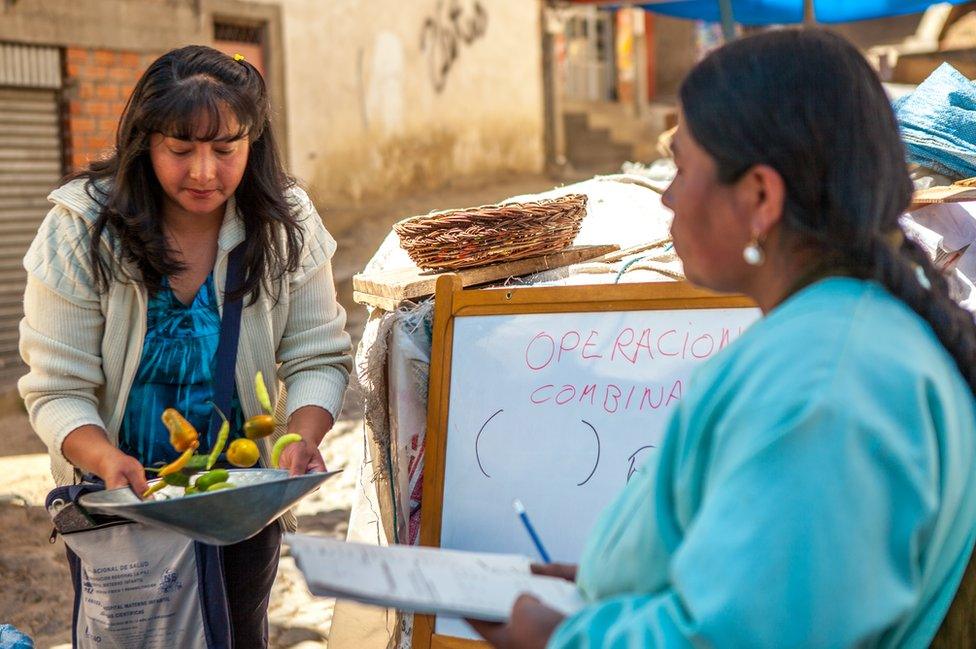
Ms Guzman often uses produce to help her explain maths
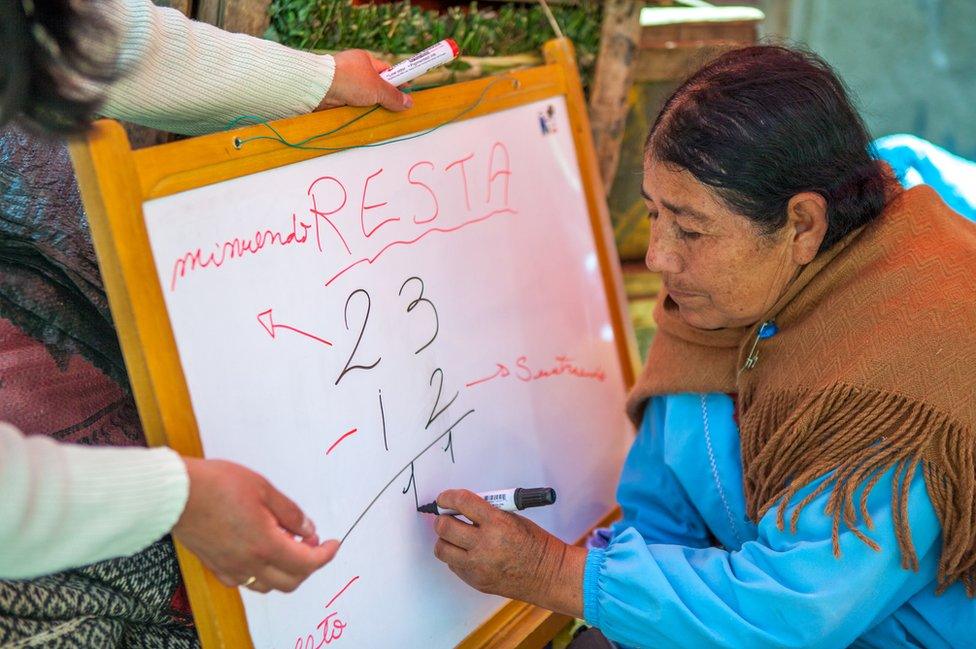
Ms Guzman takes her whiteboard around the market
One of the women she teaches is Paulina Flores, 49.
"I've worked since I was eight years old," she explains. "My parents died when I was only a child and I had to go out and work hard every day until now."
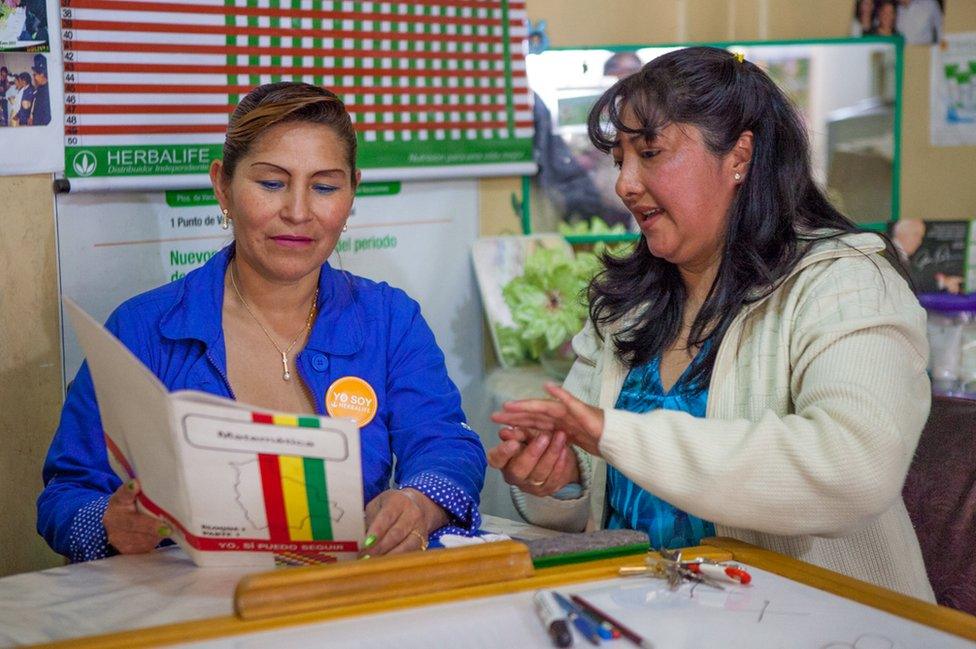
Paulina Flores (left) never got the opportunity to learn to read and write as a child
"I only got a chance to study thanks to our teacher, who came to where we were," she adds.
The programme takes dedication. Students have to practise reading daily, as well as writing and doing simple sums.
In the "Yes, I can continue" course, students learn to understand longer texts and construct complex sentences as well as multiply and divide.
They are also taught basic geography, history and biology.
But Ms Flores says for her it is all worth it as she now hopes to be able to realise her childhood dream of going to university to study physiotherapy.
- Published26 November 2014

- Published24 January 2016

- Published29 January 2016
